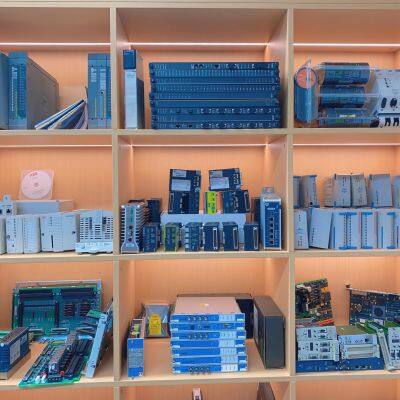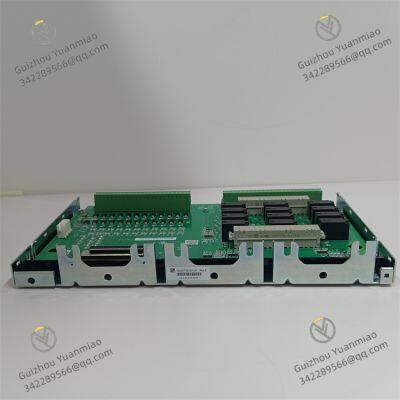Product Description
I. Product Overview
GE IS230TNDSH2A is a terminal board module belonging to the GE Speedtronic Mark VI series. In the process of industrial automation, this module plays a key role, mainly used to realize efficient connection and transmission of various input and output signals, providing strong support for the stable operation and precise control of the entire control system. It can be connected with a variety of sensors, actuators and other control equipment, accurately transmitting the signals collected on-site to the core processor of the control system, and at the same time delivering the control instructions issued by the processor to the corresponding executing agencies, ensuring that various parameters in the industrial production process are accurately monitored and controlled.
IS230TNDSH2A adopts advanced circuit design and high-quality electronic components. It integrates a high-speed signal processing chip inside, which can quickly respond to and process a large number of input and output signals, greatly improving the efficiency and accuracy of signal transmission. At the same time, the module is equipped with a complete set of signal isolation and protection circuits, which can effectively resist the interference of the complex electromagnetic environment in industrial sites, prevent signal distortion and equipment damage, and ensure the stability and reliability of data during transmission. In terms of structural design, the module follows the standardized design concept, with a compact and reasonable size, which can be conveniently installed in various industrial control cabinets, working together with other modules to build a complete and efficient industrial automation control system. The shell is made of strong and durable materials, with excellent anti-vibration and anti-impact performance, which can adapt to harsh industrial environments and ensure long-term stable operation.

II. Performance Parameters
(1) Electrical Characteristics
Power Requirements: The module is usually provided with a stable working power supply by the backplane of the control system, generally 24V DC. This power input design not only meets the common power standards in industrial environments, but also ensures the low power consumption characteristics of the module during operation, which will not cause excessive burden on the power supply of the entire control system, providing reliable power support for the stable operation of the internal circuit of the module.
Input and Output Channel Specifications: The module is equipped with rich input and output channels, including 16 digital input channels, which can accurately collect switching signals from on-site equipment, such as the on-off status of sensors; there are also 16 digital output channels, which can be used to control the start and stop of various actuators to achieve precise control of industrial equipment. In addition, there are 4 analog input channels, which can receive analog signals output from devices such as temperature sensors and pressure sensors, and convert them into digital quantities recognizable by the control system; there are 2 analog output channels, which can output precise analog signals for adjusting equipment that requires continuous control such as the opening of control valves.
Signal Processing Speed: Benefiting from its advanced hardware architecture and high-speed signal processing chip, IS200TDBSH2ACC performs excellently in terms of signal processing speed. It can quickly collect, convert and transmit various input signals, ensuring that the control system can timely respond to the state changes of on-site equipment. For some industrial application scenarios with high real-time requirements, such as the automatic control of high-speed production lines, this module can well meet the needs.
(2) Interface Characteristics
External Device Connection Interface: To facilitate connection with external devices, the module is equipped with various types of interfaces. For digital input and output, reliable screw terminal interfaces are adopted. This interface design makes the wiring firm and reliable, and easy to install and maintain. When working on-site, technicians can easily connect the signal lines of external devices to the corresponding terminals, and it is also easy to check and replace the lines during later maintenance. For analog signal connection, a dedicated analog signal interface is used, which has good anti-interference ability, can effectively reduce the attenuation and distortion of analog signals during transmission, and ensure the accurate transmission of analog signals.
Backplane Communication Interface: Through the interface connection with the control system backplane, IS200TDBSH2ACC realizes data communication with other modules in the system. The backplane interface adopts a high-speed and reliable communication protocol, which can quickly and accurately transmit the input signal data collected by the module to the processor module, and at the same time receive the control instructions sent by the processor module and pass them to the corresponding output channels, realizing the collaborative work of the entire control system. This backplane communication method not only simplifies the wiring structure of the system, but also improves the reliability and stability of the system.
(3) Environmental Adaptability
Operating Temperature Range: The module has excellent environmental adaptability, with a wide operating temperature range, and can operate stably under extreme temperature conditions from -40°C to +70°C. Whether in cold northern industrial sites, hot southern production workshops, or even some special high-temperature or low-temperature industrial environments, such as high-temperature areas in steel mills and low-temperature environments in cold storage, IS200TDBSH2ACC can maintain good working performance, ensuring that industrial production is not affected by temperature changes.
Anti-Electromagnetic Interference Performance: Industrial sites often have complex electromagnetic interference sources, such as the start-up of large motors and the operation of frequency converters, which may affect the normal operation of the module. To cope with this challenge, IS200TDBSH2ACC adopts advanced electromagnetic shielding technology and filter circuits in its design, which can effectively resist external electromagnetic interference, ensure the normal operation of the internal circuit of the module and the accuracy of signal transmission. After strict industrial-grade electromagnetic compatibility testing, the module fully complies with relevant standards and can work reliably in harsh electromagnetic environments.
III. Functional Features
(1) Efficient Data Acquisition and Transmission Function
One of the core functions of the IS230TNDSH2A module is to realize efficient acquisition and rapid transmission of various industrial signals. Through its rich input channels, it can collect various analog and digital signals from the industrial site in real time, quickly convert these signals into digital form, and accurately transmit them to the processor of the control system through the backplane communication interface. During data transmission, the module adopts an optimized data transmission protocol to ensure the integrity and timeliness of data, providing reliable real-time data support for the control system, enabling the system to make accurate decisions in a timely manner according to the actual situation on site.
(2) Flexible Signal Processing and Conversion Function
For different types of input signals, the module has strong signal processing and conversion capabilities. For analog signals, the module integrates a high-precision A/D conversion circuit, which can accurately convert continuously changing analog quantities into digital quantities, facilitating processing and analysis by the control system. At the same time, the module also supports preprocessing operations such as filtering and amplification of analog signals to improve the quality and reliability of the signals. In terms of digital signal processing, the module can process input digital signals according to preset logical rules, such as logical operations and state judgment, to realize intelligent control of industrial equipment. In addition, the module can also convert the digital control instructions issued by the control system into corresponding analog output signals or digital output signals to drive external actuators, meeting the diverse needs of different industrial application scenarios.
(3) Reliable Fault Diagnosis and Self-Protection Function
To ensure the stability and reliability of the system during industrial production, the IS230TNDSH2A module is equipped with a complete fault diagnosis and self-protection mechanism. The module is equipped with multiple sensors and monitoring circuits inside, which can monitor its own working status in real time, such as power supply voltage, signal transmission quality, chip temperature, etc. Once an abnormal situation is detected, the module can respond quickly, send fault alarm information to the control system through indicator lights or communication interfaces, and take corresponding self-protection measures at the same time, such as cutting off the power supply of the fault channel and automatically switching to the backup channel, to prevent the fault from expanding and protect the safety of the module itself and the entire control system. This reliable fault diagnosis and self-protection function greatly improves the availability and maintenance efficiency of the system, and reduces the risk of shutdown during industrial production.
(4) Good System Compatibility and Expandability
As a member of the GE Speedtronic Mark VI series, IS230TNDSH2A has excellent compatibility with other modules of the series and GE's control systems. It can be seamlessly integrated into existing industrial automation control systems, working together with other modules to realize the overall function of the system. At the same time, when the industrial production scale expands or the production process changes and the control system needs to be expanded, the module can also easily cope with it. Users can flexibly add or replace modules according to actual needs to meet the system's expansion requirements for the number and types of input and output channels, providing great convenience for the upgrading and transformation of industrial automation systems.

IV. Installation Steps
Preparation Before Installation: Before installing the module, first check the appearance of the module to ensure that there is no obvious damage, deformation or component falling off on the module surface. At the same time, carefully check whether the interfaces of the module are intact to avoid communication failures or abnormal signal transmission after installation due to interface problems. Confirm that the power supply of the 1771 series I/O enclosure is turned off to ensure the safety of the installation process. Prepare necessary installation tools, such as screwdrivers, wire strippers, crimping pliers, etc., and select wires of appropriate specifications according to actual wiring needs to ensure that the electrical performance of the wires can meet the working requirements of the module.
Module Installation: Align the IS230TNDSH2A module with the reserved slot in the industrial control cabinet, push it in smoothly along the guide rail until the module is in close contact with the backplane, ensuring that the module is installed in place. Use the fixing screws that come with the module to firmly fix it on the guide rail of the control cabinet to prevent the module from loosening due to vibration during equipment operation, which may affect signal transmission and system stability. During installation, care should be taken to avoid physical damage to the module, and ensure that the module is installed in the correct direction, with an appropriate distance from other adjacent modules to facilitate heat dissipation and maintenance.
Wiring Connection: According to the interface marks of the module and the wiring requirements of external equipment, connect the signal lines of external equipment to the corresponding input and output interfaces of the module one by one. When connecting digital signal lines, ensure that the wires are firmly connected to the screw terminals, and tighten the screws to avoid loosening or poor contact, which may lead to misjudgment or loss of digital signals. For the connection of analog signal lines, special attention should be paid to the wiring order and polarity, and the operation should be carried out in strict accordance with the instructions. At the same time, try to shorten the length of the signal lines to reduce interference during signal transmission. After wiring is completed, carefully check the connection of each wire to ensure correctness.
Power-On Configuration and Testing: After wiring is completed, turn on the power supply of the industrial control cabinet. At this time, the power indicator of the module should be on, indicating that the module is normally powered. Configure the module parameters through special programming software, and set the type, signal range, filtering parameters, etc. of the input and output channels according to the needs of the actual industrial application scenario. After configuration, start the external equipment to simulate the actual industrial production operation state, and observe whether the running indicator of the module and the status indicators of each channel change normally. At the same time, real-time monitor the data collected by the module and the output control signals through programming software to verify whether all functions of the module are normal, ensuring that the module can accurately collect and transmit signals and realize effective control of industrial equipment.


Prosoft 202-DFNT-MCM4 Communications Module
Prosoft 5202-DFNT-MCM4 Communications Module
Emerson KJ4110X1-BA1 Programmable Logic Controller
ABB 1MRB15004R0001 Communication Module
ABB 1MRB150005R0001 Digital I/O Module
HIMA 80105 984080105 Communication Module
ABB 1MRK001967-AA Control Card
ABB 1MRB150020R1102 Ccontroller Module
ABB 1MRB150038R1 Power Supply Module
ABB 1MRB150051R1 Power Supply Module
ABB 1MRB150022 R0002Y Controller Module
ABB 500CSP04 1MRB150051R2 Communication Processor
 yezi
Hi there! Welcome to my shop. Let me know if you have any questions.
yezi
Hi there! Welcome to my shop. Let me know if you have any questions.




